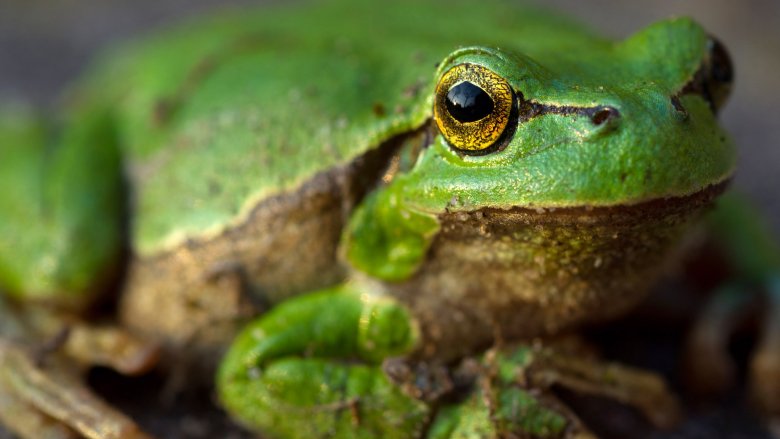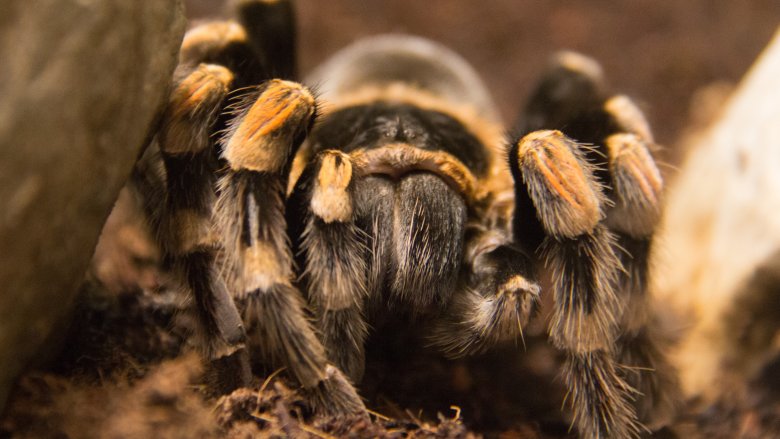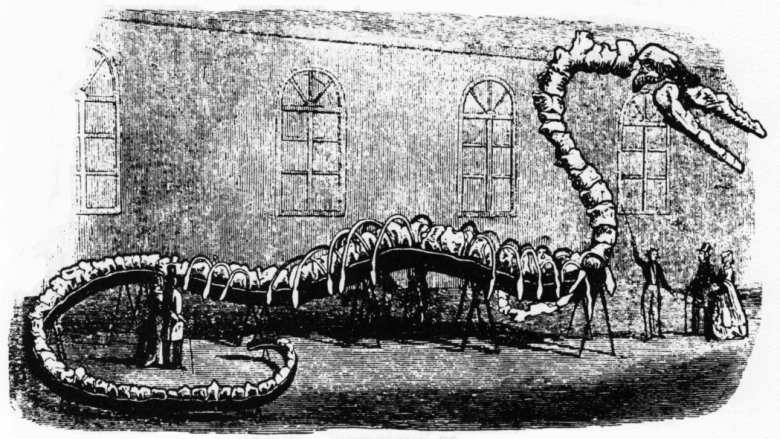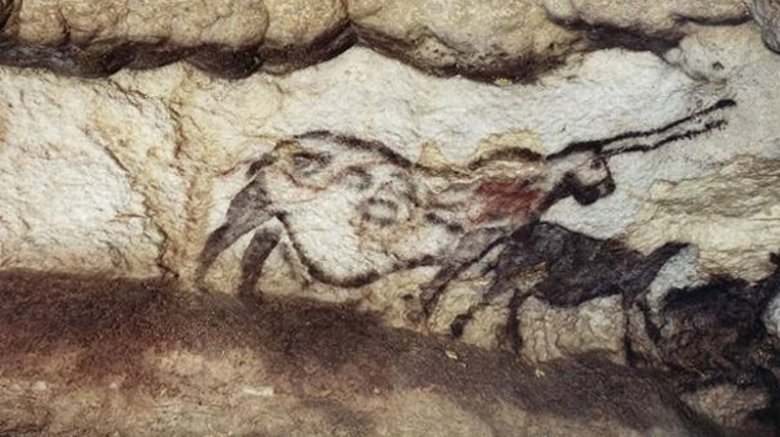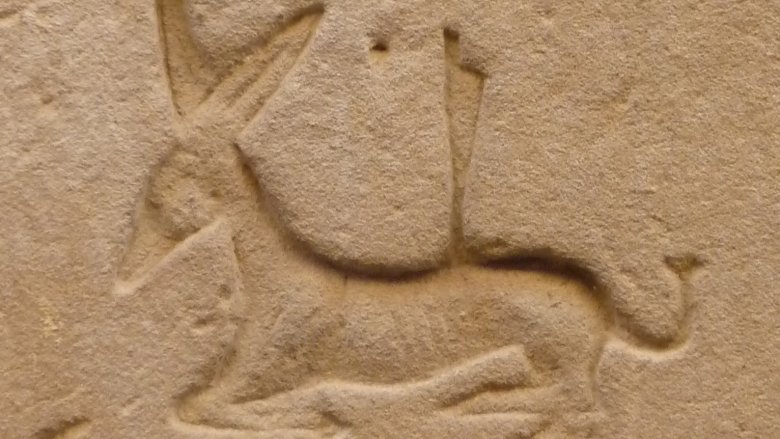Historical Animals That May Never Have Existed
The human desire to capture, chronicle, and categorize every animal we come into contact with has resulted in a rich record of terrestrial creatures, both living and extinct. But there's a problem with that insatiable desire to be the person responsible for discovering and classifying the fauna of the past (and sometimes even of the present) — mistakes happen, and sometimes historical animals are misidentified, cobbled together out of bones that don't actually belong to them, or just made up entirely. That means the animals of the past may not really be animals at all, but figments of someone's imagination and/or eventual characters in the Harry Potter franchise.
Thankfully, it's not a mistake that biologists and paleontologists tend to make on a regular basis, but it happens often enough nowadays to be amusing. It also probably warrants correction, especially if you're the sort of person who just can't have fun with 140-foot sea monsters and islands that kill people.
Godzilla frog
When fossilized tracks were found in the Elk County woods near Pittsburgh in 1948, paleontologists weren't sure what they were, but the press knew. "Heavy, definite imprints in the sandstone," wrote a local reporter, "as though made by a giant chicken as it hopped across the surface."
Happily, the giant chicken analogy didn't persist because humans can handle T-rexes, mammoths, and megalodons, but giant chickens would definitely put us all over the edge. According to Wired, it was clear to paleontologists that the tracks had been made in a time before chickens — millions of years before KFC or birds of any kind. In fact, in that particular era of geologic time, insects and amphibians ruled the world. That led people to speculate that the tracks had been made by a giant frog, which would have had legs about 2.5 feet apart.
The identity of the track-leaver didn't move beyond speculation until 1983, when two paleontologists decided to have another go and determined the tracks couldn't have possibly been left by a vertebrate, in part because there was a long, continuous groove down the middle that a hopping animal would not have left behind. Also there was the part where no one had ever found additional evidence of giant frogs from that era. Instead, they decided, the tracks were probably left by a giant sea scorpion. Good thing giant sea scorpions are way, way less terrifying than giant frogs. Or giant chickens. Thanks, paleontologists.
A chimeric penguin
Early paleontologists were sort of like kids with boxes of jumbled legos. "Hmm, these parts don't actually look like they came from the same set, but they were in the same box, so ... that means this rocket ship has wheels and a grappling hook."
And in that way, many fossilized creatures made the journey from never existing to totally existing to totally never existing. Just total bloopers of historical animals. One such example is the Hunter Island penguin.
According to Mental Floss, in 1980 scientists were excavating a "prehistoric trash heap" on Hunter Island in Tasmania when they discovered a set of penguin bones that appeared to be different from the bones of any other known penguin species. So they gave the bones a name — Tasidyptes hunterivan — then congratulated themselves on being such awesome species discoverers. And they lived happily ever after.
Until 2017, when someone decided to ruin everything and do some DNA testing on the bones, and oops ... they were actually bones from three different very much not-extinct penguins. Curse you, modern forensics science. You are no fun at all.
Cambodia's national not-really-an-animal
In another tale of DNA totally ruining decades of tradition and the hopes and dreams of children, another animal that probably never existed is the kouprey, which was declared Cambodia's national animal in 1960.
In 1937, a hunter shot an odd-looking bull ox. The creature weighed nearly a ton, had crescent-shaped horns (big ones), and didn't seem to resemble any known species of ox living in the area. Less than 100 years before that, Paul du Chaillu gained international fame for being the first Westerner to confirm the existence of the gorilla, so it was kind of a holy grail to be the discoverer of a brand new species. That's probably why no one really questioned the conclusion that the unfortunate creature was a member of a heretofore unheard-of genus. Even the Harvard Museum of Comparative Zoology was on board, displaying the stuffed and mounted specimen.
Live "koupreys" existed in the wild in small numbers, which prompted its rise to the status of "Cambodia's national animal" as well as nationwide efforts to preserve the species. And then researchers from Northwestern University in Chicago had to come along and DNA-test all the fun out of the kouprey, concluding that the animal was actually just a feral cross between two very common types of domestic oxen. Let's give those scientists a round of applause and the Nobel Prize for party-pooping. Oh, sorry. The Nobel Prize for scientific party-pooping.
A ginormous spider
You know what the world needs? A giant spider. You know, a Frodo-eating, Harry Potter menacing, freaking enormous spider.
Just kidding. The world does not now need — nor has it ever needed — a giant spider. So thankfully, Megarachne, the spider with a foot-long body and a leg span of 19+ inches (roughly the size of a raccoon) did not actually exist. Or did it? No! Shut up. It never existed. Please, some of us have to sleep tonight.
Here's the story of Megarachne, as told by Wired: In 1890, a paleontologist named Mario Hunicken, who clearly wanted to be remembered as the guy responsible for haunting the nightmares of every man, woman, and child in the entire world, announced he'd discovered the remains of a giant spider in Argentina. Then he hid it away in a bank vault so no one could ever question that giant spiders once roamed the Earth.
Then in 2005, biologists reclassified Megarachne as a giant sea scorpion. Yes, that's only marginally better than a giant spider, but still, praise all the deities. The only people who were really bummed about the reclassification were the producers of a BBC documentary featuring Megarachne as a giant spider, which was ready to air pretty much at exactly the same moment scientists decided Megarachne was never actually a thing. Everyone else can probably agree the non-existence of a giant spider really is the best thing ever.
The fake sea serpent that everyone so wanted to be real
The word "dinosaur" was coined in 1842. After that, fossil collecting became a national pastime, but not everyone was qualified to do it. Amateurs assembled skeletons all wrong, turning upright creatures into belly-dragging iguana-beasts, and sometimes the bones of several creatures would get mixed into one skeleton, much like what happened with the never-actually-existed Hunter Island penguin.
Sometimes, though, these misassembled fossils are cool. So cool, that museums say things like, "We know this is wrong but it's just way too cool to do anything about." According to Atlas Obscura, in 1845 a "fossil prospector" named Albert Koch found some vertebrae from an extinct giant whale called a basilosaurus. He assembled them into a 140-foot serpent he called "the water king," or hydroarchos. Anyone who knew anything about fossils could have called baloney on Koch's creation, but King Friedrich Wilhelm IV of Prussia had no idea because what Prussian king knows anything about paleontology? King Wilhelm was so impressed that he paid actual money for the monster and had it displayed at the Royal Anatomical Museum, even though the museum's scientists had their suspicions.
After that success, Koch decided to build another hydroarchos, which he sold to a museum in Chicago. It remained on display, even though curators knew it wasn't an actual animal, until the Great Chicago Fire destroyed it in 1871. But hey, at least those curators understood the value of fun.
Prehistoric France's own unicorn
Most of the animals found in prehistoric paintings are based on real historical animals. In Lascaux, France, artists depicted stags, horses, cattle, bison, predators like bears and big cats, and even animals that no longer exist in Europe, like the woolly rhinoceros. But one puzzling creature in the Lascaux cave complex is one that probably never existed at all: It's been dubbed the Lascaux unicorn, but it appears to be a composite of several animals. According to Paleolithic and Neolithic History, the unicorn is nearly 8 feet long and has the body of a woolly rhino, the shoulder of a bison, the head of a lion, and the tail of a horse. It got its name from not one but two long, straight horns that look sort of like unicorn horns except that there are two of them. The unicorn also has a giant potbelly, leading some researchers to suspect it might be a fertility symbol.
It's always difficult to say how past observers arrived at their conclusions, though. Looking at the Lascaux unicorn, to the untrained eye it's just another bison, albeit a fat one with really strange horns. Maybe it's not really a composite. Maybe whoever painted it just wasn't that great at painting. Still, it's fun to imagine prehistoric France being full of horses, woolly rhinos, and unicorns. Unfortunately, there isn't any additional evidence that such a creature ever existed.
A camelopehoundvaark (or something)
The Set animal is ancient Egypt's version of the Lascaux unicorn. Some Egyptologists think it's a composite of multiple historical animals, and others wonder if it's a now-extinct creature. Depending whom you ask, it's either an antelope, a greyhound, a donkey, a camel, a long-snouted mouse, a giraffe, an aardvark, a boar, a jackal, a hare, or about a bazillion other creatures that live in or around Egypt that you've probably never heard of.
According to Images of Set author Joan Lansberry, some Egyptologists have speculated the Set animal is the extinct Sivatherium, a strange-looking creature with a long nose and wide horns thought to be an ancestor of the modern giraffe. The Set animal was built more like a greyhound, though, which wouldn't make the dumpy, thick-necked Sivatherium as a candidate.
Lansberry thinks the Set animal, which is often (but not always) depicted with an erect tail and erect, square-tipped ears, is actually an ancestor of the modern Saluki, an Arabian hunting dog. Traditionally, Salukis have their ears docked much the same way breeders dock the ears of a pitbull, except with square tips. That doesn't explain the bizarre, aardvark nose and the forked tail the Set animal developed over the years, but it at least offers a logical genesis for a creature that appears only in Egyptian art and hieroglyphics.
Islands that drown people on purpose
You know that scene in The Empire Strikes Back where they landed on an asteroid and then the asteroid tried to eat them? The Greeks had an ocean-dwelling version of that creature — it was known as aspidochelone, and it wasn't just one or two sailors who came home with stories about it. Regular sightings of aspidochelone were reported for centuries, beginning (at least as far as the historical record is concerned) in the second century A.D.
According to Ancient Origins, aspidochelone was always huge and was sometimes mistaken for an island. Particularly unfortunate sailors might stop there for a cookout, and then when the creature noticed that someone had just built a campfire on its back, it would dive back down into the water and drown everyone and their hamburgers.
Aspidochelone was probably based on a real animal. Older descriptions of it said it could attract fish with a sweet odor it emitted from its mouth, which is a behavior that could (at a stretch) be attributed to a whale. Today we admire and respect those giants of the sea, but it's not hard to see how a second-century sailor might see an enormous whale open its mouth and jump to a "that island just tried to eat me" sort of conclusion.
The panther that roams the outback
People have been seeing Bigfoot for well over a century, and tales of the Loch Ness monster have persisted since Saint Columba in 565 A.D. Not to be outdone, a crypto creature also roams the outback of Australia. Sightings of a large, black feline have been reported for generations, but like just about every Bigfoot, Loch Ness monster, and similar animal said to exist just outside the reach of scientific evidence, no one has ever been able to find its remains or capture a decent photo of one.
Still, according to the Sydney Morning Herald, more than 500 eyewitness accounts point to something, even if it's just a population of escaped circus animals or a very large, especially terrifying feral house cat. What's less likely is that Australia has a native population of big cats. Australia actually has only one remaining indigenous predator (the Tasmanian devil). Its two largest indigenous predators (the marsupial lion and the marsupial wolf) are both extinct.
An animal identified as a large Maine Coon cat was recently shot and killed in the Blue Mountains National Park, prompting speculation that maybe it was the source of the panther legend, although it was evidently someone's pet and was named Gregory, which makes it a sort of unlikely explanation for "generations" of sightings. Still, the Blue Mountain Panther is probably explainable, but it's taken a stupidly long time to find the answer.
Bigfoot gets his own national preserve
Because Bigfoot and all his cousins simply will not leave humanity alone, here's a legend beloved by so many people that it got its own national preserve.
In Bhutan, Bigfoot is called "Migoi." According to High Country News, Migoi is a giant man-beast standing 8 feet tall that can evade capture by walking backward and becoming invisible. Stories of the Migoi have persisted for centuries and are so widely believed that the government set aside 253 square miles of forest specifically for its protection. Yep, protecting Bigfoot was not a side benefit of establishing a national park; it was the sole reason for establishing a national park.
The good news is that other, actual creatures get protected by default simply because they happen to share a habitat with the totally-not-imaginary Migoi. The Sakteng Wildlife Sanctuary is also home to the Himalayan red fox, snow leopards, the Himalayan black bear, the red panda, and a species called the "barking deer." So although Migoi probably doesn't really exist and probably never did, it's at least able to do some good from its place in not-history.
